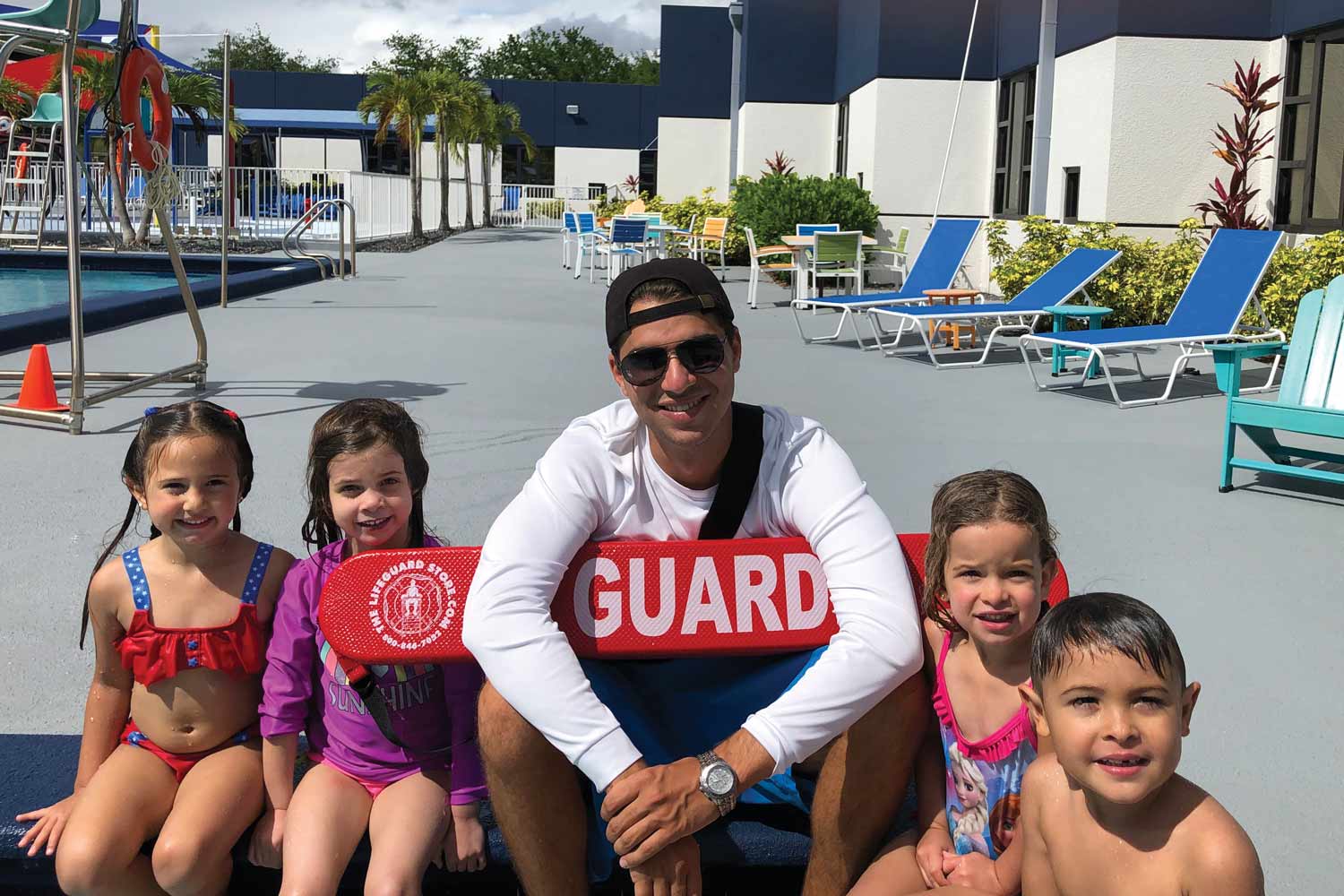During summer, community rec center pools see their highest volume of visitors, putting pool risk management to the test. The most common visitors are children, who can be a constant risk if not watched properly.
To ensure your aquatics department is ready to defend your facility and its members from harm, consider revamping some aspects of your pool safety rules.
Swim Band Policy
Many rec centers now implement a swim band policy for the safety of their members. At the Hanover Area YMCA in Hanover, Pennsylvania, children ages 3 to 14 must take a swim test, prior to receiving a swim band from one of three tiers:
- Green band — able to swim the pool’s length, tread water for one minute, float on their back for 30 seconds, be 8 years old, and able to swim without supervision.
- Yellow band — able to stand in the four-feet end with the water at their armpit level. They can’t go to the deep end and parents must be near the pool.
- Red band — given automatically if you stop swimming at any point. Parents must be in the pool with them.

“It was rocky at the start, but people understood it was about their children’s safety, and even though we have lifeguards, their child is not the only child [the lifeguards] are watching,” said Tammy Shore, the Hanover Area Y’s aquatics director.
Since adding a swim test, Shore has seen less parents distracted and more apt to watch their children.
Continued Education
Before you can conduct training with your staff, you need to stay up-to-date with the latest trends and safety measures. Julie Sevilla, the aquatics director at the David Posnack JCC in Davie, Florida, makes sure her staff has the most current training by attending conferences.
At a drowning prevention conference, Sevilla was inspired by the keynote speaker’s emphasis on the importance of lifeguards as first responders. “I wanted [my staff] to know this emergency room doctor, who has been a lifeguard, was putting such a strong emphasis on lifeguards and their role for aquatic emergencies,” she said. “I wanted them to know so they felt better about themselves and their role, and more empowered so if I’m not there, they can be in control and handle any situation.”
Shore practices continued education by holding monthly in-service trainings for lifeguards to go over possible scenarios. “If you don’t use it, you lose it — we really want to keep our staff on top of things,” she said. “So we do a lot of training with heart attack and stroke situations in the pool.”
Facility Drills
All aquatics staff at the Posnack JCC go through initial trainings prior to beginning their position. Shore described one drill where a staff member or volunteer puts on a “victim” T-shirt and simulates a situation in the pool. “When we do these, none of the staff know we’re going to do it,” she said. “We want to make sure we are doing our best to be ready for any possible situation.”
Another benefit of these drills is a chance for reflection, to discuss what can be done better. “We always stumble on something,” said Shore. “We as staff stand back and watch everybody do their job, and then evaluate what we can do to make things better and safer.”
Educating Members
Other than drills, another great way to endorse pool safety is hosting events. At her JCC, Sevilla hosted a community-wide national water safety day, open to the public, that highlighted pool, spa, sun and boating safety, as well as proper life jacket use and CPR demonstrations.
Sevilla also incorporated urgent care centers, fire and rescue, children and family services, and local children’s hospitals. “Educating parents with all this information so they can have a more enjoyable and safer experience around water is what it’s all about,” she emphasized.
On a daily basis, Sevilla encourages her staff to educate members. “We have signage posted at each pool, so part of the lifeguard’s job is enforcing the rules — not just enforcing, but educating them on why it’s important not to run on the pool deck, or why there’s no diving allowed,” she said.
Pool safety is a crew effort. It takes members and staff holding each other accountable to minimize risk, as well as strong leadership. “It’s important to have a good leader who can orchestrate and develop a great team,” said Sevilla.










